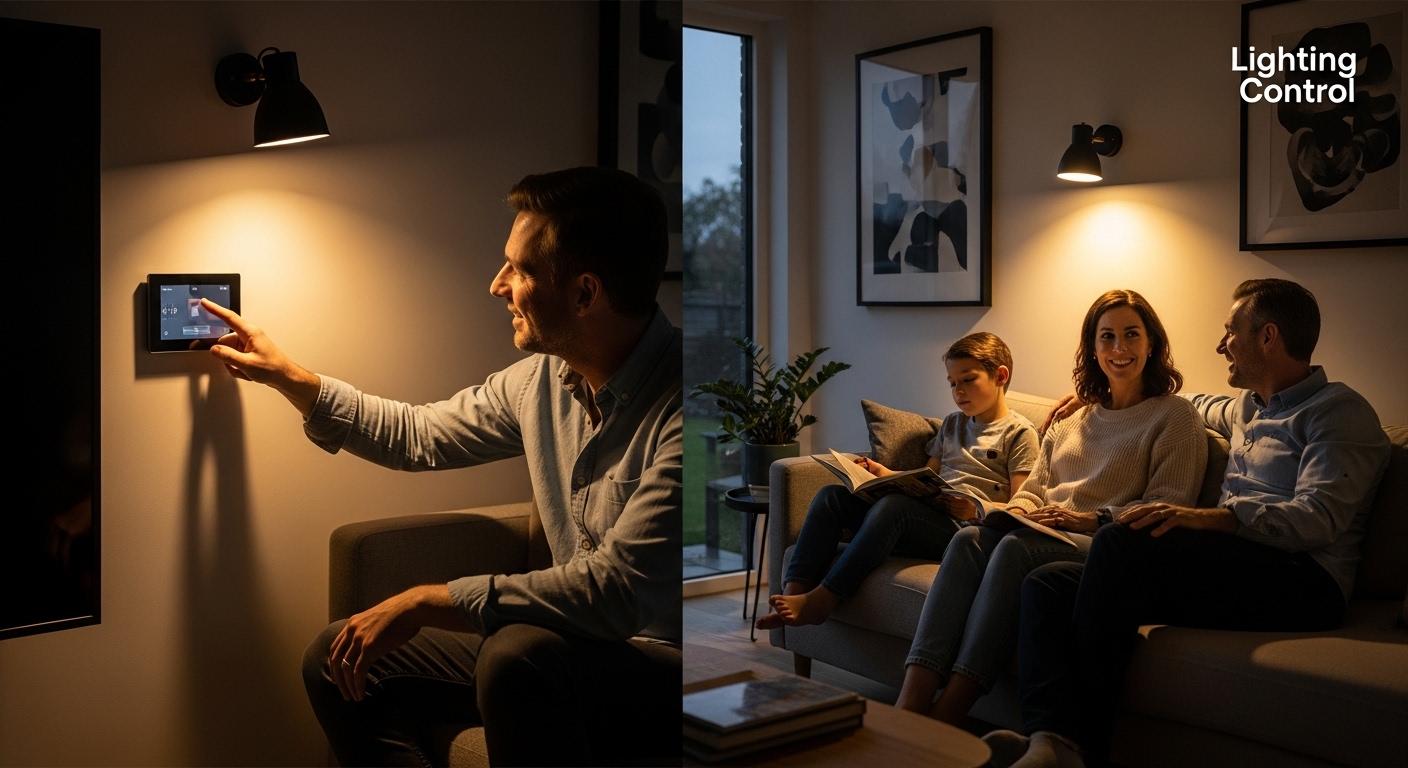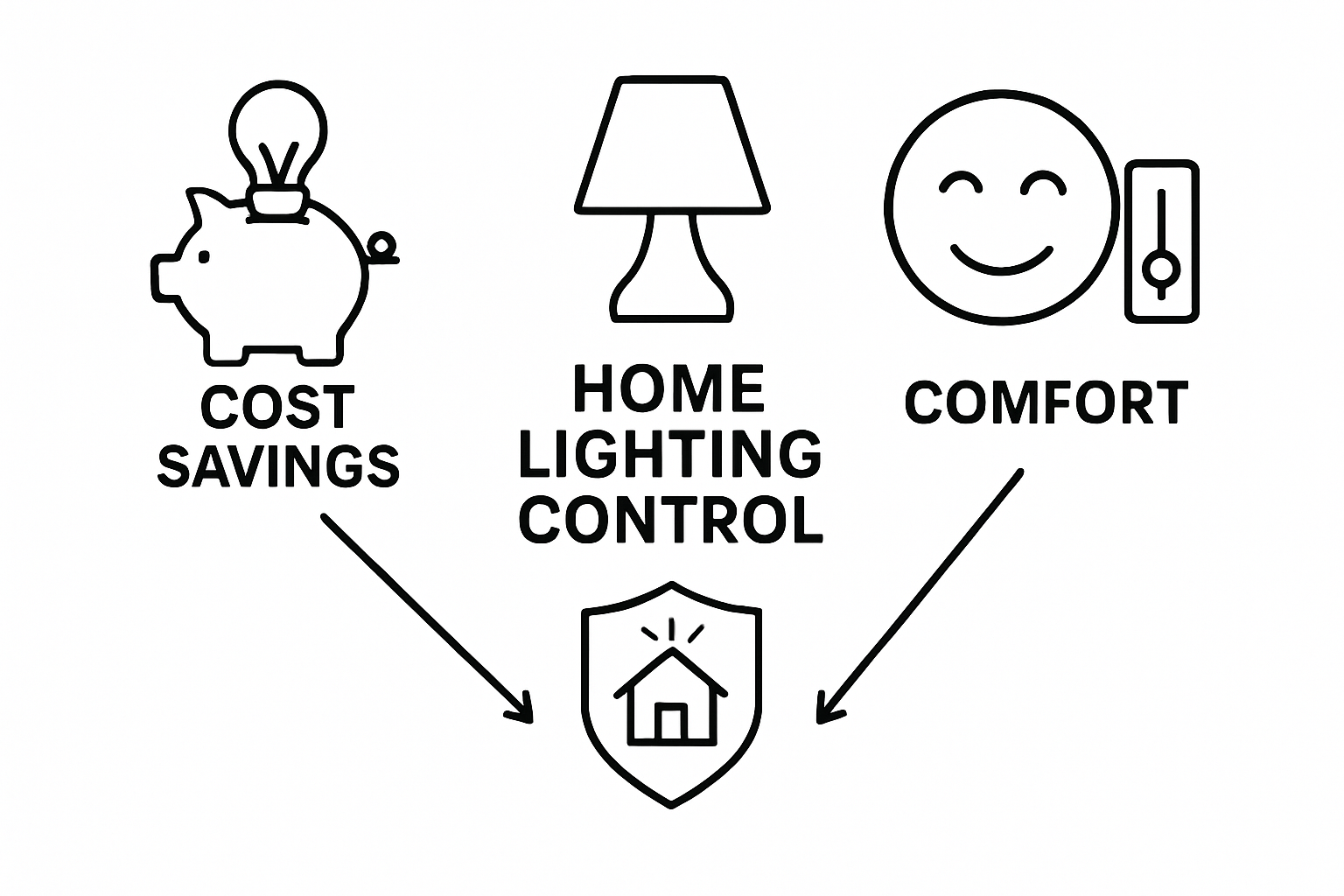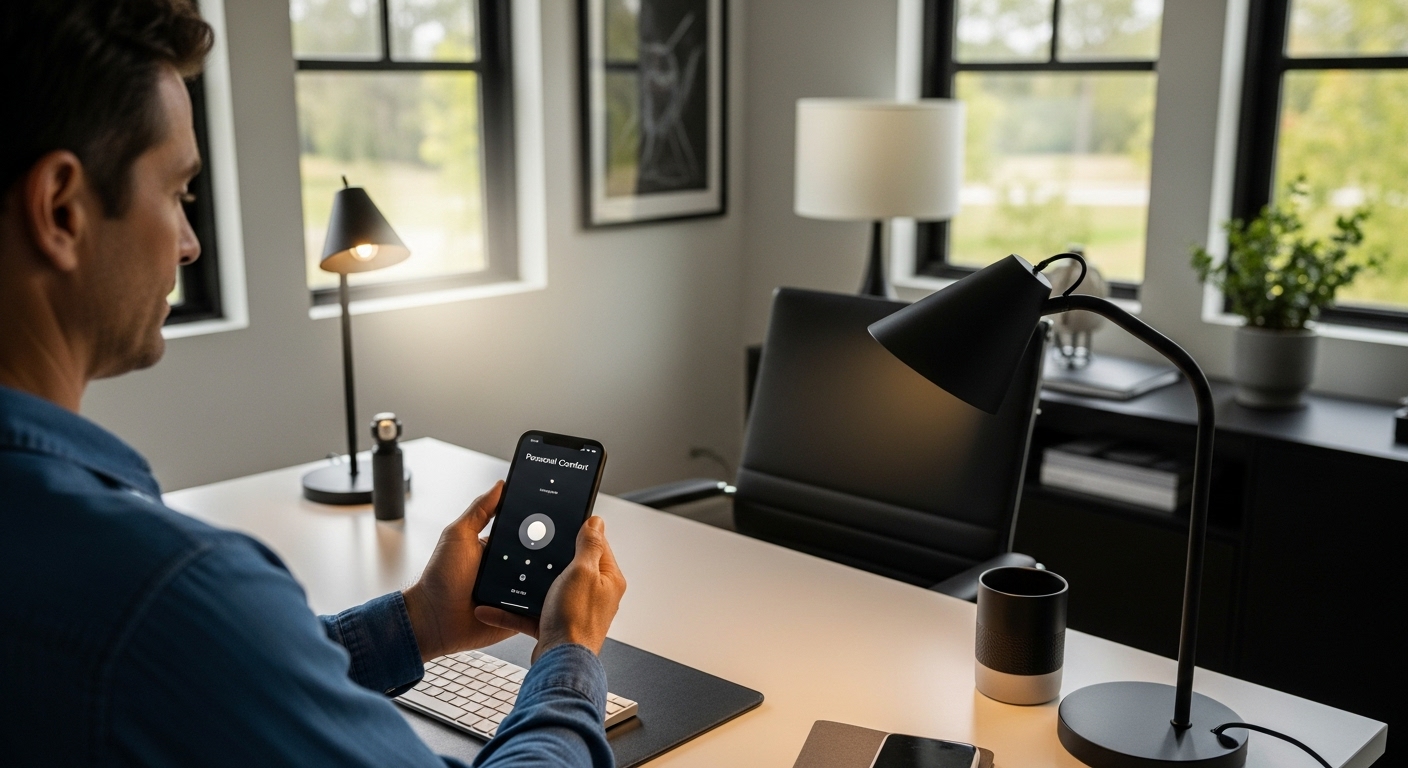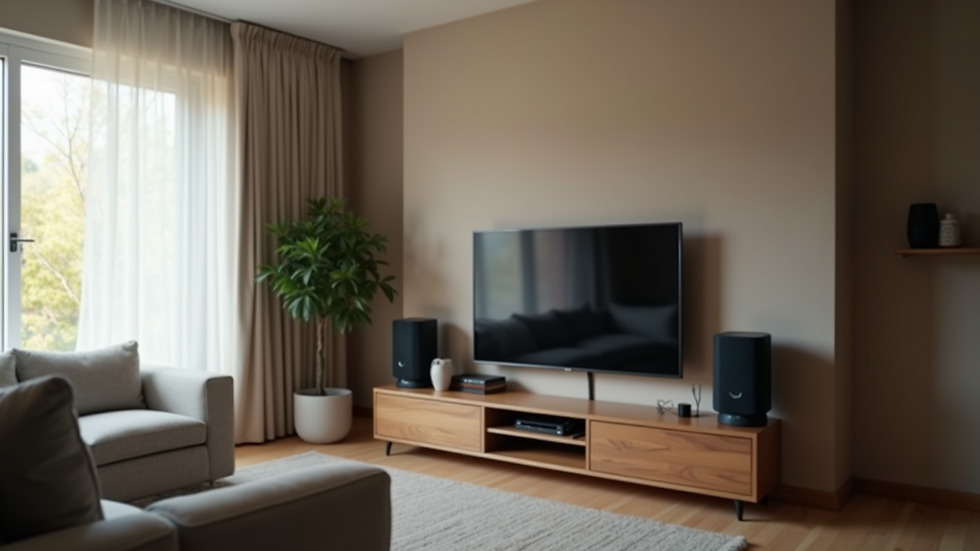Understanding Home Lighting Control: A Comprehensive Guide
- garygarihanjr
- Sep 27
- 8 min read

Home lighting control used to mean flipping a switch and calling it a day. Now smart systems let you create custom moods, automate routines, and even cut your utility bills. Here is the wild part. Smart lighting controls can reduce your electricity use by up to 75 percent compared to old setups. Most people still picture it as a fancy upgrade, not as the backbone of comfort, savings, and security in modern living.
Table of Contents
Quick Summary
Takeaway | Explanation |
Advanced control enhances ambiance | Home lighting control allows personalized lighting scenes for various moods and activities, adding comfort and aesthetics to homes. |
Significant energy savings achievable | Systems can reduce electricity usage by up to 75% through smart scheduling and occupancy detection, lowering electrical bills effectively. |
Improved home security measures | Smart lighting can simulate occupancy and deter intruders, working alongside security systems for enhanced protection. |
Flexible integration with automation | These systems can connect to other smart devices, creating dynamic scenarios that improve convenience and utility throughout the home. |
Increased property value from technology | Implementing smart lighting systems can raise the overall value of a property by integrating advanced, desirable technology features. |
What is Home Lighting Control and Its Purpose?
Home lighting control represents a sophisticated technological approach to managing illumination within residential spaces, transforming traditional lighting systems into intelligent, responsive environments. This advanced system goes far beyond simple on and off switches, enabling homeowners to create customized lighting experiences that enhance comfort, aesthetics, energy efficiency, and overall living quality.
Understanding the Core Concept
At its fundamental level, home lighting control integrates electrical and electronic technologies to provide precise management of lighting fixtures throughout a residence. Unlike traditional lighting setups where each light operates independently, these systems allow centralized, programmable control through various interfaces like smartphone apps, wall panels, voice commands, or automated schedules.
The primary purposes of home lighting control include:
Creating personalized ambiance for different activities and moods
Enhancing home security through strategic illumination
Reducing energy consumption by optimizing lighting usage
Increasing property value through advanced technological integration
Technical Foundations and Smart Integration
Modern home lighting control systems leverage smart technology to provide unprecedented flexibility. These systems typically incorporate sensors, wireless communication protocols, and intelligent software that can learn and adapt to homeowner preferences. Learn more about smart home technology integration to understand how these sophisticated networks operate.
By connecting lighting controls with other home automation systems, homeowners can create complex scenarios. For instance, lights can automatically adjust based on natural daylight levels, simulate occupancy when residents are away, or synchronize with entertainment systems to enhance movie watching experiences.
The evolution of home lighting control represents a significant leap from traditional electrical infrastructure, offering a dynamic, responsive approach to residential illumination that prioritizes both functionality and personal comfort.
Why Home Lighting Control Matters for Homeowners
Home lighting control transcends mere illumination, offering homeowners a powerful tool to transform their living spaces into intelligent, responsive environments that significantly enhance quality of life, comfort, and efficiency. The strategic implementation of advanced lighting systems provides multifaceted benefits that extend well beyond traditional lighting approaches.
This table organizes the main benefits of home lighting control under three key categories to help readers understand their practical value.
Category | Benefit | Explanation |
Comfort & Experience | Personalized ambiance | Enables tailored lighting scenes for different moods and activities. |
Energy Efficiency | Reduced consumption and lower costs | Saves up to 75% on electricity by using smart scheduling and occupancy detection. |
Security & Safety | Enhanced protection and peace of mind | Simulates occupancy, deters intruders, and integrates with home security systems. |
Enhanced Personal Comfort and Experience
Modern home lighting control systems allow homeowners unprecedented personalization of their living environment. By creating customized lighting scenes, residents can instantly adjust illumination to match specific activities, moods, or times of day. Whether preparing a romantic dinner, working from home, or relaxing after a long day, precise lighting control enables seamless transitions between different atmospheric requirements.
Key comfort advantages include:

Ability to preset lighting configurations for different scenarios
Immediate mood and ambiance transformation

Reduced eye strain through adaptive lighting solutions
Elimination of harsh or inconsistent lighting conditions
Energy Efficiency and Cost Savings
Lighting represents a substantial portion of residential energy consumption. Explore smart home upgrade strategies to understand how intelligent systems can dramatically reduce electrical expenses. Home lighting control systems incorporate advanced sensors and scheduling capabilities that automatically manage energy usage, leading to significant cost reductions.
According to the U.S. Department of Energy, smart lighting controls can reduce electricity consumption by up to 75% compared to traditional lighting methods. These systems strategically minimize unnecessary illumination through occupancy detection, daylight harvesting, and precise scheduling.
Safety and Security Enhancement
Beyond comfort and efficiency, home lighting control plays a critical role in residential security. Intelligent systems can simulate occupancy when homeowners are away, create the appearance of an actively inhabited residence, and provide strategic illumination that deters potential intruders. Automated lighting can be synchronized with security systems, motion sensors, and smart home networks to create comprehensive protection strategies that go far beyond traditional security approaches.
Key Components and Technologies of Home Lighting Control
Home lighting control systems represent a sophisticated integration of hardware, software, and communication technologies that work seamlessly to provide intelligent illumination management. Understanding the core components helps homeowners appreciate the complexity and potential of these advanced systems.
The following table summarizes the essential hardware components and wireless communication technologies used in modern home lighting control systems for easy comparison and reference.
Component/Technology | Description |
Smart Wall Switches/Dimmers | Devices that replace traditional switches, allow manual and digital control over lighting levels. |
Wireless Sensors/Detectors | Motion, occupancy, or light sensors that trigger automation and energy savings. |
Central Control Hub | The main processor or gateway that manages communication and system logic. |
LED Compatible Controllers | Devices that manage dimming and color options for LED fixtures. |
Network Bridges | Hardware enabling connectivity between different communication protocols. |
Zigbee/Z-Wave | Wireless protocols that enable secure, low-power device communication in smart homes. |
Wi-Fi | Standard wireless networking, allowing integration with smartphones and cloud services. |
Essential Hardware Components
The physical infrastructure of home lighting control comprises several critical elements that enable precise and flexible illumination management. Central to these systems are smart controllers, which act as the brain of the lighting network, processing commands and coordinating interactions between various devices.
Key hardware components include:
Smart wall switches and dimmers
Wireless sensors and motion detectors
Central control hubs or processors
LED compatible controllers
Network bridges for connecting different protocols
Communication and Connectivity Technologies
Learn more about smart home automation technologies to understand the intricate networks powering modern lighting systems. Wireless communication protocols play a crucial role in enabling seamless interactions between lighting components. Technologies like Zigbee, Z Wave, and Wi Fi provide robust and reliable communication channels that allow devices to exchange information instantaneously.
According to the U.S. Department of Energy, these wireless technologies enable sophisticated control mechanisms that can significantly reduce energy consumption and enhance user experience.
Software and Intelligence Integration
Beyond hardware, the true power of home lighting control lies in its intelligent software systems. Advanced algorithms enable learning capabilities that adapt to homeowner preferences, automatically adjusting lighting based on time of day, occupancy, and ambient light conditions. Machine learning and artificial intelligence transform lighting systems from simple on off switches to dynamic, responsive environments that anticipate and meet user needs.
These intelligent systems can create complex lighting scenarios, integrate with broader home automation platforms, and provide granular control that transforms residential illumination into a personalized, efficient experience.
Real-World Applications and Benefits of Lighting Control Systems
Lighting control systems represent more than technological innovation. They transform residential spaces into adaptive, responsive environments that enhance comfort, safety, efficiency, and overall quality of life. By integrating advanced technologies, homeowners can create sophisticated lighting experiences tailored to their specific needs and preferences.
Lifestyle and Personal Comfort Enhancement
Home lighting control systems offer unprecedented personalization of living spaces. These intelligent systems enable residents to create precise lighting scenarios that adapt dynamically to different activities, moods, and times of day. From creating a calm atmosphere for evening relaxation to generating bright, energetic environments for morning productivity, lighting control provides remarkable versatility.
Key lifestyle applications include:
Creating immersive entertainment environments
Supporting circadian rhythm through adaptive lighting
Enhancing home office and workspace productivity
Generating romantic or relaxing atmospheres on demand
Supporting specific activities like reading or cooking
Energy Management and Sustainability
Explore the future of luxury living with smart home technologies to understand how advanced systems contribute to sustainable living. Lighting control systems play a crucial role in reducing residential energy consumption by implementing intelligent management strategies that minimize unnecessary illumination.
According to the National Renewable Energy Laboratory, advanced lighting control technologies can deliver significant energy savings by automatically adjusting illumination based on occupancy, daylight availability, and user preferences.
Security and Home Protection
Beyond comfort and efficiency, lighting control systems serve as powerful security tools. By simulating occupancy through programmed lighting sequences, homeowners can create the impression of an actively inhabited residence, deterring potential intruders. Smart systems can randomize lighting patterns, integrate with security networks, and provide real time monitoring capabilities that significantly enhance residential protection strategies.
Transform Your Home Lighting Experience With Expert Solutions
Are you frustrated by the limitations of traditional lighting in your home? If you want adaptive illumination that improves daily comfort, security, and energy savings, you are not alone. As discussed in our guide, home lighting control brings unmatched personalization and efficiency, yet implementing it can feel overwhelming without the right expertise. We understand how essential perfect lighting is to your mood and lifestyle, especially when you want that smart, integrated feel that luxury homes deserve.

The team at Techology Experts specializes in making advanced smart lighting and automation effortless to enjoy. Discover how our custom solutions deliver intelligent control, real energy savings, and complete convenience, all tailored to your needs. Ready to upgrade? Contact us for a custom quote today and let us show you how easy it is to bring beautiful, responsive lighting to every corner of your home.
Frequently Asked Questions
What is home lighting control?
Home lighting control is a technological system that allows for centralized, programmable management of lighting fixtures in a home. It enables homeowners to adjust lighting through smartphones, voice commands, and automated schedules, enhancing comfort, aesthetics, and energy efficiency.
How does home lighting control enhance energy efficiency?
Home lighting control systems can reduce energy consumption by up to 75% compared to traditional methods. They use advanced sensors and scheduling to minimize unnecessary illumination, integrating features like occupancy detection and daylight harvesting to optimize lighting usage.
What are the main components of a home lighting control system?
Key components include smart wall switches, wireless sensors, a central control hub, and network bridges for connectivity. These devices work together to manage lighting efficiently and can integrate with other smart home technologies.
Can home lighting control systems improve home security?
Yes, home lighting control systems can enhance security by simulating occupancy when homeowners are away. They can be programmed to create the appearance of an inhabited space, which deters potential intruders and integrates with security systems for comprehensive protection.
Recommended

Comments